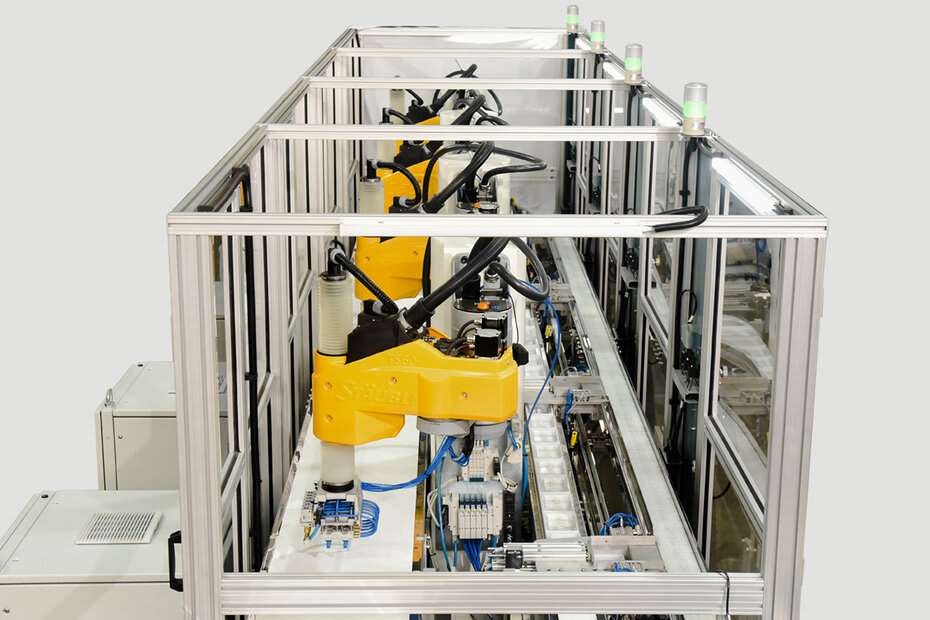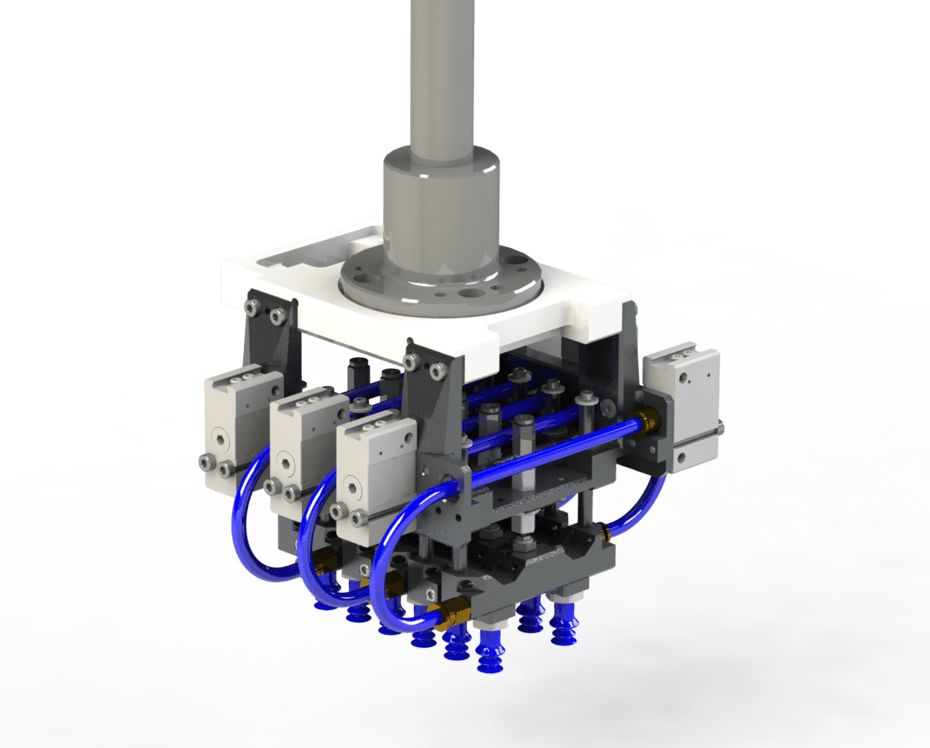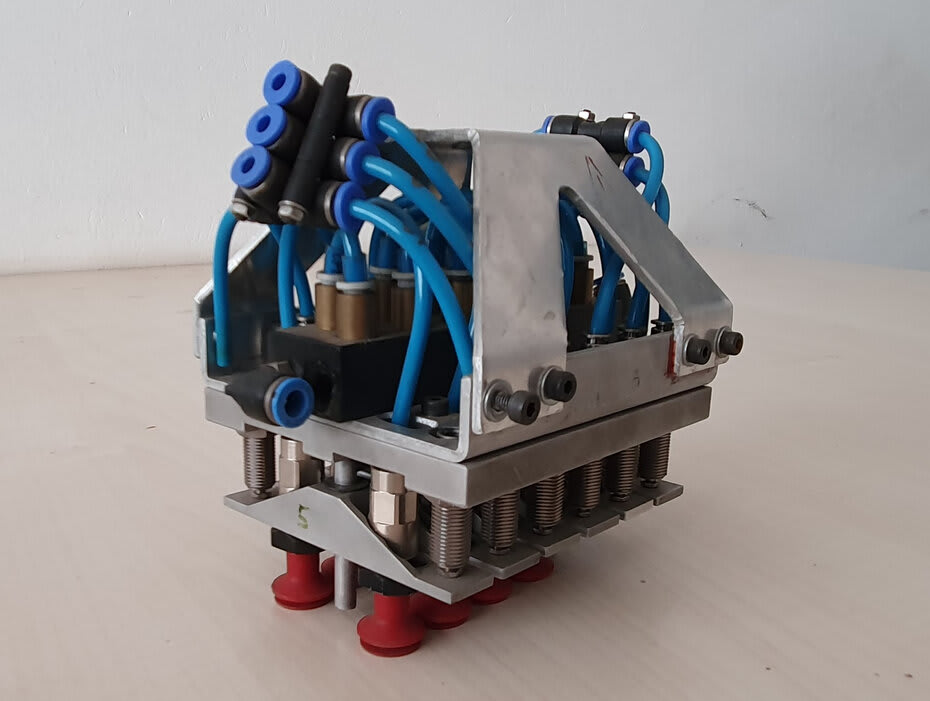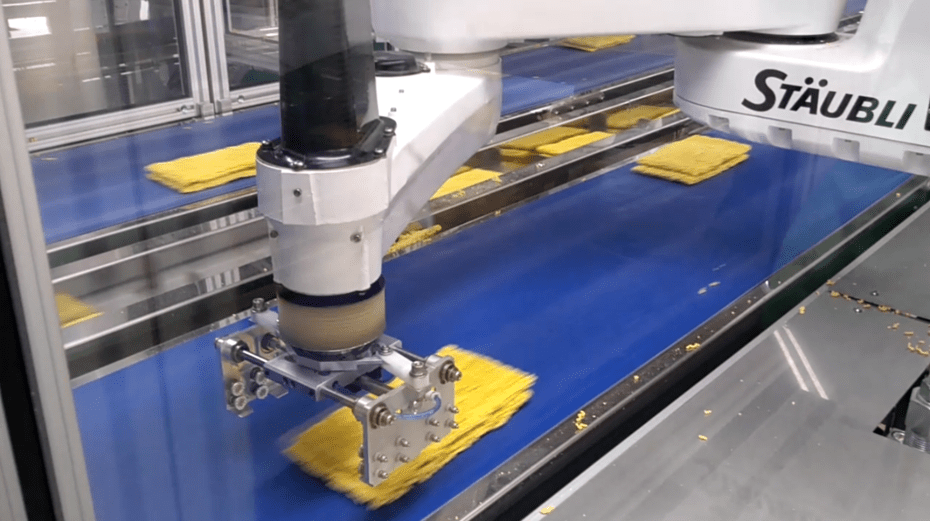Claw Development for Robotized Solutions

The robotic cell is one of the most effective options for industries looking for increased productivity and improved quality. Among the components, the robot's claw stands out for its versatility for handling products of the most varied types. The claw is like a “hand” for the robot - special claws are developed to meet the specific needs of the process / production line.
The development of a grapple depends on the type of product that will be handled for productivity. The greater the number of manipulable parts in the gripper, the smaller the number of cycles for the robot, consequently more time will be left for it, attenuating its physical efforts, increasing its useful life.
Read also: Automação e Robotização - Strengthening in Times of Pandemia
HANDLING OF FOOD PRODUCTS TO BE PACKED
In order for a system to replace a manual handling line in the food industries, product integrity, quality requirements and the solution as a whole are taken into account.

Figure 1 - Claw for Chocolate Handling
In Figure 1 we can see an integrated solution in which the chocolate will be handled for primary packaging - blisters . The robot's claw has six suction cups that individually pick up the products. The chocolates are selected through a vision system that tells the robots the position of each one. The robot's grip grabs product by product independently. The mass and the speed with which the grapple acts also influence the robot's performance, so we select more agile and materials lighter like Polymers and Aluminum - which are in line with quality requirements.
A pneumatically operated gripper depends on compressed air supply and auxiliary components. When vacuum is used as a means of aggregating the product to the grapple, suction cups are placed as an interface. The material in this suction cup must be non-toxic, as it is the component that will be in direct contact with the product.
PROJECT
The gripper design normally starts from scratch, except for standard or existing solutions. In the case of an exclusive claw, the 3D model, such as Figure 2 , is part of an idea or prototype .

Figure 2 - OEE control of a robotic cell
For complex grips that have high manufacturing costs or parts, a pre-project or a prototype is recommended before the final design (example Figure 3 ) that can physically test on a simpler model with basic components (less concern with details such as materials, finish, brand of components, etc.).

Figure 3 OEE control of a robotic cell
The definitive construction of a gripper for manipulation with robots requires structural rigidity and precise clamping to ensure that during productive work it does not disassemble, as it will undergo constant repetitive effort .
VARIABLES
Manipulated products have peculiarities (dimensional or the material itself) that require specific claws. It is normal to use suction cups for packaged products, but for products without packaging , it will depend on the face texture for the handle.
In the example of Figure 4 it was not possible to use vacuum due to the product density , in addition to handling two pieces at the same time (stacked). It was necessary to use the clamp concept to allow manipulation.
The speed of the claw directly influences the project: the technology that exists to catch an object in motion and deposit it in motion, added to the speed of the claw, delay the robot's productivity. Therefore, the faster the claw, the more time left for the robot.
One of the challenges is to absorb dimensional variation - to be fast and not to damage the product (brittle product). In such cases, there are revisions of the claw or even a change of concept , if its performance disturbs the system as a whole.

Figure 4 - OEE control of a Robotic Cell
SOLUTION
SNEF executes projects that involve all stages of the industrial process. They are complete solutions and tailor-made, using technologies already integrated in the Industry 4.0 concept for your company's local needs. Automation and robotization are a guarantee of the health and well-being of its employees and allow production not to stop due to the pandemic.
 Solutions
Solutions2024.06.26
Find out how Snef can help you enhance the efficiency of your plant!
We are excited to announce the acquisition of new machines and equipment to enhance our customers' plant efficiency! and guarantee that systems, components or installations are functioning correctly and in accordance with the established...
 Solutions
Solutions2023.04.10
Drainage projects in photovoltaic parks.
with the growing investment in projects and implementation of solar parks for diversification of energy matrices, the challenges also grow. Challenges is in relation to drainage and rainwater management. So it is necessary to understand the...
 Solutions
Solutions2021.02.10
CYBER CRIMES - A SITIATED WORLD
To avoid cybercrime, companies must structure their information security areas by reinforcing network and security monitoring.

